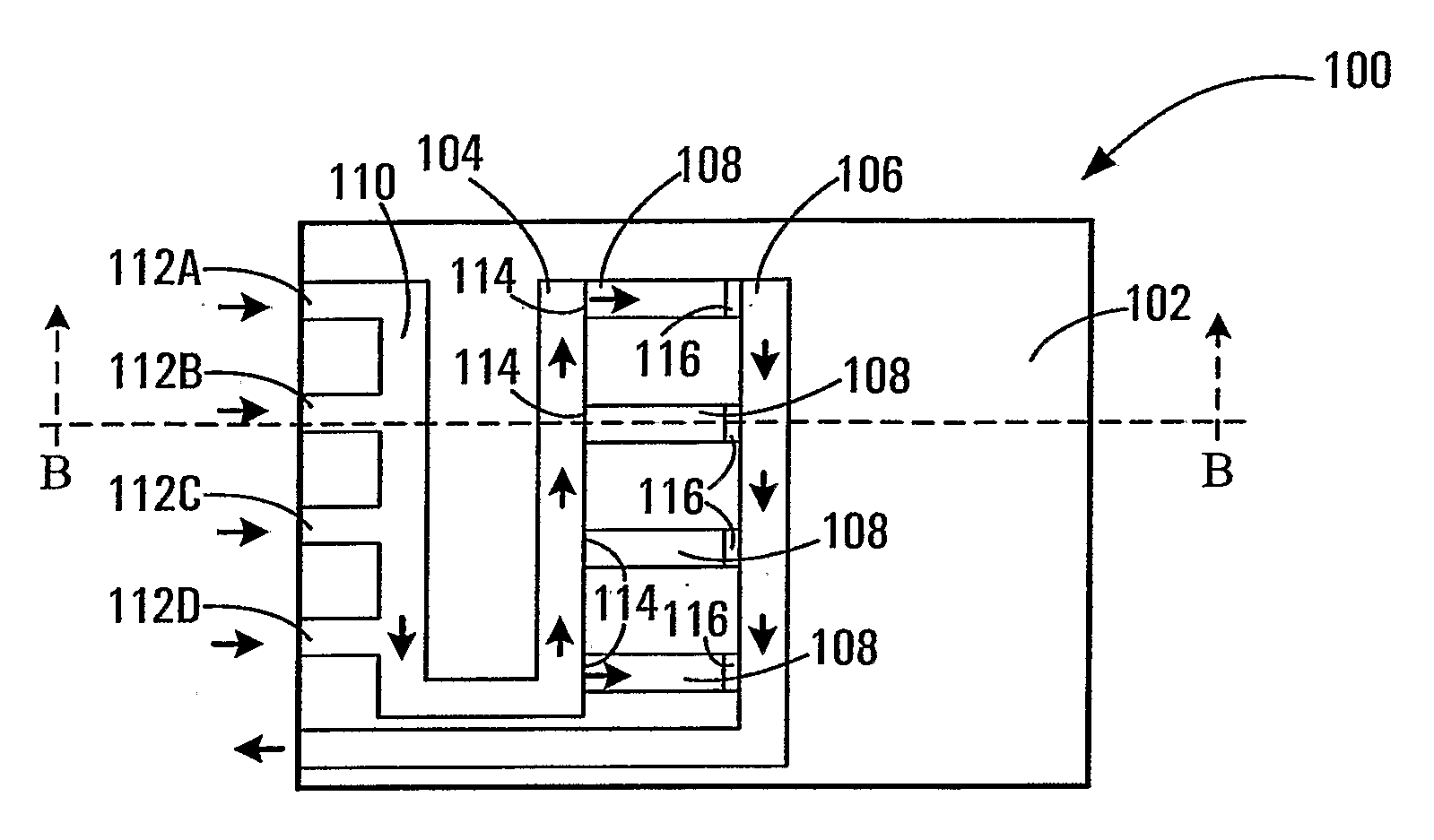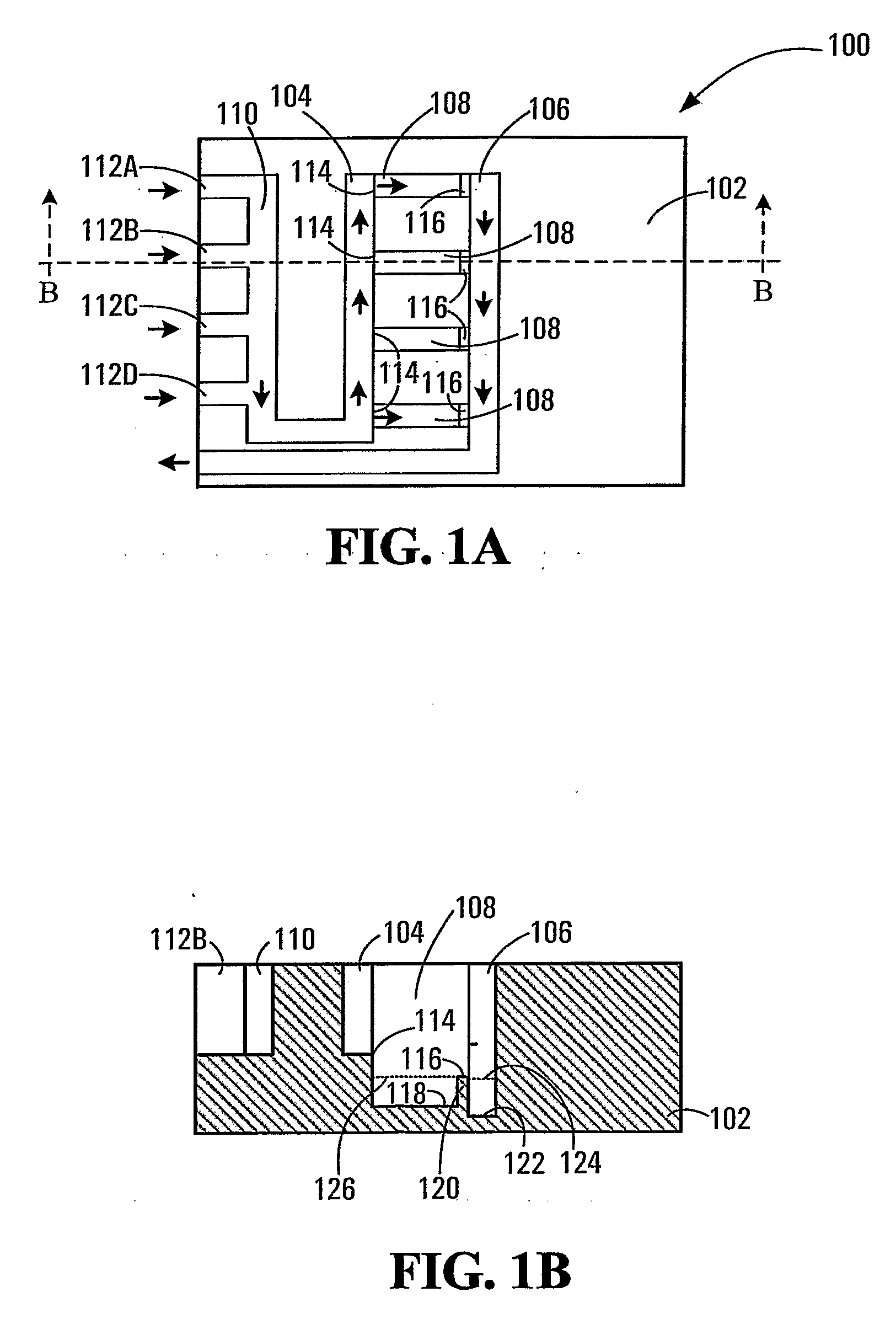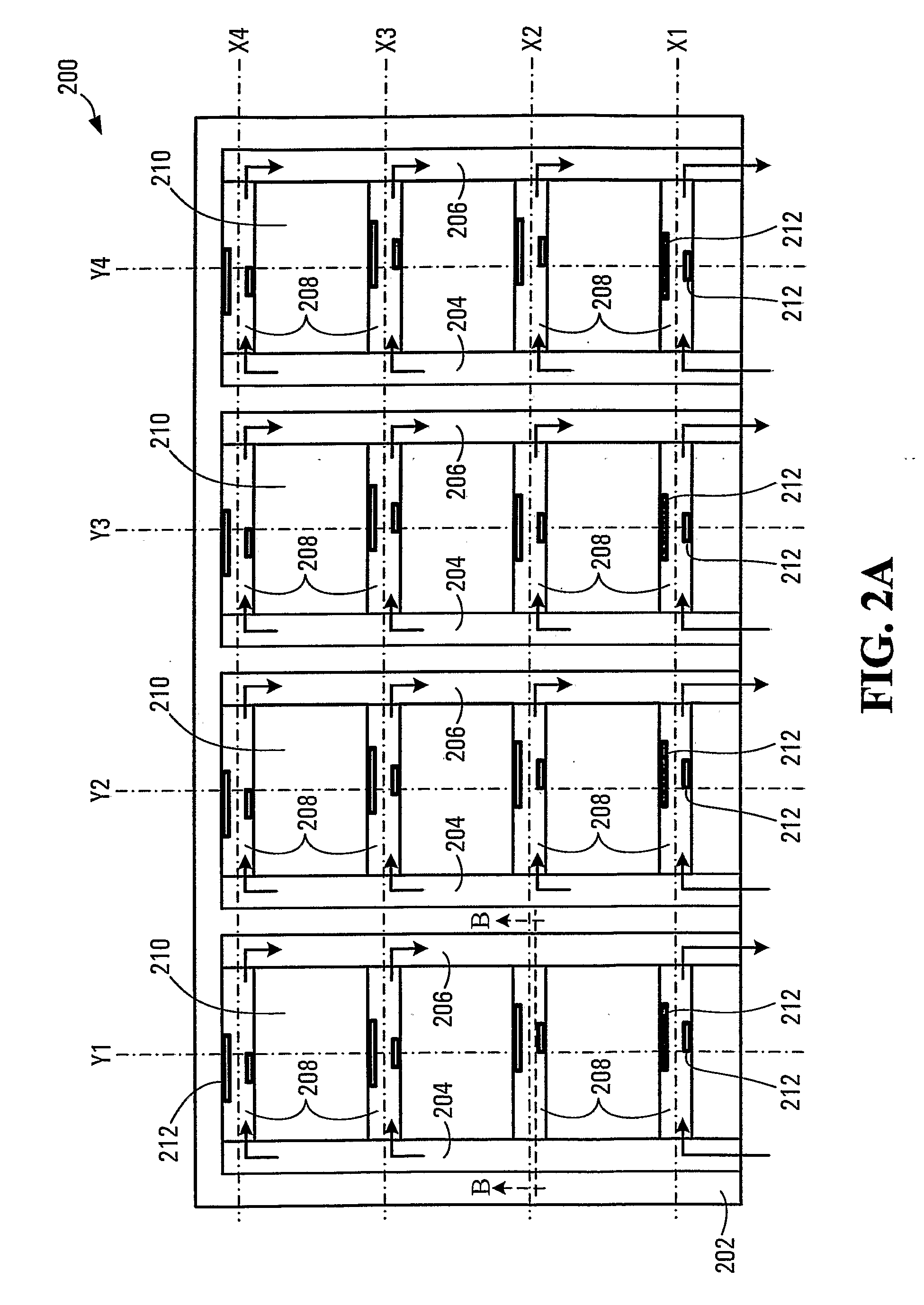Microchip and Method for Detecting Molecules and Molecular Interactions
a molecular interaction and microchip technology, applied in the field of detection of molecules and molecular interactions, can solve the problems of false or inaccurate detection, cross-interference between different test sites, and disadvantages of conventional microchips, and achieve the effect of inhibiting the diffusion of molecules
- Summary
- Abstract
- Description
- Claims
- Application Information
AI Technical Summary
Benefits of technology
Problems solved by technology
Method used
Image
Examples
Embodiment Construction
[0026]FIGS. 1A and 1B illustrate a microchip or microfluidic biochip 100, exemplary of an embodiment of the present invention.
[0027]Biochip 100 includes a substrate 102. An inlet channel 104, an outlet channel 106, and a plurality of test channels 108 are formed in substrate 102. The test channels 108 may be substantially parallel to each other. Inlet channel 104 is in fluid communication with, and can receive fluid from, a dilution channel 110. Dilution channel 110 has multiple inlets 112A to 112D (also collectively and individually referred to as 112), each for introducing or feeding a fluid into dilution channel 110. Each test channel 108 has an inlet 114 and an outlet 116. Each test channel 108 is in fluid communication with inlet channel 104 through inlet 114 and with outlet channel 106 through outlet 116. While four test channels 108 are depicted in FIG. 1A, the number of test channels 108 may vary depending on the particular application and manufacturing considerations. Each ...
PUM
| Property | Measurement | Unit |
|---|---|---|
| distance | aaaaa | aaaaa |
| depth | aaaaa | aaaaa |
| depth | aaaaa | aaaaa |
Abstract
Description
Claims
Application Information
 Login to View More
Login to View More - R&D
- Intellectual Property
- Life Sciences
- Materials
- Tech Scout
- Unparalleled Data Quality
- Higher Quality Content
- 60% Fewer Hallucinations
Browse by: Latest US Patents, China's latest patents, Technical Efficacy Thesaurus, Application Domain, Technology Topic, Popular Technical Reports.
© 2025 PatSnap. All rights reserved.Legal|Privacy policy|Modern Slavery Act Transparency Statement|Sitemap|About US| Contact US: help@patsnap.com



